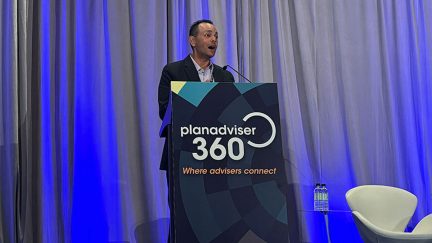Want the latest retirement plan adviser news and insights? Sign up for PLANADVISER newsletters.
Another Year of Steady Investment Menu Reform
From a fundamental rethinking of the role of ESG investing to ongoing money market fund reform, there was no shortage of major shifts for defined contribution plan investment menus in 2015.
At a high level, industry thinking about the retirement plan investment menu has seemingly converged around the “KISS” principle. KISS, of course, is short for “Keep it simple, stupid.” According to a variety of business leaders and regulatory experts, expansive and complicated defined contribution (DC) plan investment menus are falling out of favor about as fast as any other practice in the industry.
Important to note is that this simplicity is limited to the participants’ perspective; advisers and sponsors still face challenging fiduciary concerns and recordkeeping limitations in delivering simplified menus.
Within the menu, participants are especially seeking new types of annuities and other approaches to retirement income planning beyond simply rolling over to an individual retirement account and applying the rather archaic-seeming 4% rule. In another top story for 2015, retirement income purchasers inside and outside DC plan menus finally got a small boost near the end of the year with the Federal Reserve’s 25-bps hike in its target interest rate.
NEXT: ESG paradigm shift and new money market rules
While introducing new guidance in October, Labor Secretary Thomas Perez told reporters ESG-based investing no longer has “the cooties” from an ERISA perspective. The Department of Labor (DOL) issued Interpretive Bulletin 2015-01, a piece of guidance Perez says will significantly expand the use of environmental, social and governance (ESG) investing principles under the Employee Retirement Income Security Act (ERISA).
Other regulators impacted the retirement plan investment menu in 2015—notably the Securities and Exchange Commission (SEC). While it technically adopted ongoing money market reforms in 2014, the next several months will be crunch-time for advisers and sponsors seeking to comply with the new rules. The good news is that sponsors and advisers have until October 2016 to decide how they will address the nearly 900-pages of rulemaking. But the timeline is tighter than some may think, given the complexity of money market funds and the potential for a late-mover premium should too many sponsors wait until the last minute to make changes.
Also challenging this year were several rounds of serious market volatility, including several very large daily swings in equity values. These spurts of major market volatility have happened pretty regularly historically, advisers will know, but it hasn’t happened in a while, so it’s critical for participants to be reminded of the long-term nature of retirement investing.
NEXT: Retirement plans tested again and again
The principles underlying retirement plan investing were tested time and again in 2015.
In one interesting example that has less to do with market moves or regulators, an attention-grabbing Business Insider video emerged that suggested investing in a 401(k) is “a complete waste of money” for Millennials. Unsurprisingly, journalists and finance experts rushed to attack the video’s producer and his line of thinking, but others agreed the video brought up some good points.
Looking ahead, experts are focused on an aging global investing population that will continue to dampen economic growth and keep interest rates low globally—rivaling the impact of cyclical market trends heading into 2016. Some advisers suggest they’ll be advocating for more active strategies and different asset classes in this environment. Still others are working to remind plan sponsor clients that conservative investment approaches still have a place on retirement plan investment menus.
Topics having to do with qualified default investment alternatives (QDIA) remained top-of-mind in 2015 and are likely to do the same next year. Advisers by now will be familiar with the challenges of picking the right QDIA for a given plan—but this year saw building momentum for managed accounts and other approaches beyond the dominant category of target-date funds (TDFs).
Whatever happens with the investment markets and regulators in 2016, you can be sure to find the latest news and analysis at www.planadviser.com/investing/.
You Might Also Like:

Voluntary Fiduciary Correction Program Improvements Take Effect

Chavez-DeRemer Confirmed as Secretary of Labor



